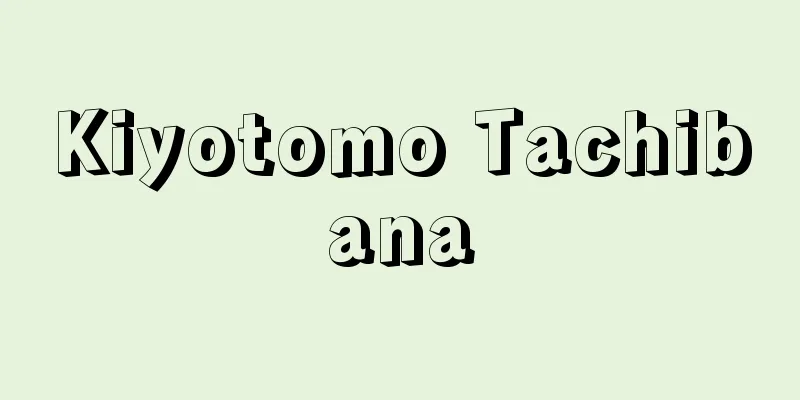Kanto

|
A general term for rice that was collected as a rice tax under the Ritsuryo system, stored in the Shoso (formal storehouses) of each province, or sent to the Kokuga (provincial government office) for various purposes. The Yoro Bunyaku (Yoro tax law) divides rice into three types: Daizei (formal tax), unhulled rice, and county rice. A portion of Daizei (formal tax) was transported to the capital as shomai (rice for carrying rice), and the profits were used for miscellaneous purposes, unhulled rice was stored, and county rice was sent to the capital for special use or as a trade offering. In addition to the above, the Tenpyo period (729-749) lists miscellaneous official rice such as official rice, land tax rice, food rice (tax) for official slaves, rice from stations, and rice from military fields. According to the Shoku Nihongi, in January of 734 (Tenpyo 6), all official rice except for rice from stations was mixed and unified into official tax, but it seems that taxes for gods, rice from soldiers, and taxes from the emperor's office were also excluded. After this, taxes from the emperor's office were mixed into official tax in 738, and rice from stations and soldiers' office were mixed into official tax in 739. With the establishment of rice from the two temples in July 744 and rice from the public office in November 745, official rice in each province was managed as a triple tax system consisting of official tax, public office, and miscellaneous rice. The regular taxes were used for the regular and temporary use of the provincial government offices and for the transportation of rice to the capital, the public offices were used to cover unpaid taxes for government property and for the transportation of capital, and the remainder was distributed as the salaries of the provincial governors. Miscellaneous rice was used for temple and shrine fees such as provincial temple fees, fees for repairing official housing, fees for repairing ponds and ditches, fees for emergency services, fees for repairing station buildings, fees for prisoners of war, and other expenses. The fixed amounts of these regular taxes, public offices, and miscellaneous rice to be collected by province were set out in the main tax ceremonies in the "Konin-shiki" and "Engishiki." [Tomoyasu Kato] Source: Shogakukan Encyclopedia Nipponica About Encyclopedia Nipponica Information | Legend |
|
律令(りつりょう)制下において田租(でんそ)として徴収され、諸国の正倉(しょうそう)に収納または出挙(すいこ)されて国衙(こくが)の諸用途にあてられた稲の総称。養老(ようろう)賦役令の土毛(どもう)条義解(ぎげ)は、大税・籾(もみ)穀・郡稲の3種に区分している。大税(正税)は舂米(しょうまい)として一部分が運京されるほかは、出挙しその利を雑用にあて、籾穀は貯備され、郡稲は出挙してその利を例用や交易進上物にあてた。天平(てんぴょう)期(729~749)の諸国正税帳にはこのほかに、公用稲、地子稲、官奴婢(かんぬひ)食料稲(税)、駅起稲(えききとう)、屯田稲(とんでんとう)などの雑官稲がみられる。『続日本紀(しょくにほんぎ)』によれば、734年(天平6)正月、駅起稲を除くすべての官稲が正税に混合・一本化されたことがみえるが、神税・兵家稲・中宮職(ちゅうぐうしき)税なども除外されていたとみられている。こののち、738年に中宮職税が、739年に駅起稲・兵家稲が正税に混合され、744年7月の国分二寺稲の別置、745年11月の公廨稲(くがいとう)の設置により、諸国の官稲は正税・公廨・雑稲の三本立てとして運用されることとなった。正税は国衙の例用・臨時用および運京の舂米にあて、公廨は官物の欠負(かんぷ)未納の補填(ほてん)、運京の費用にあて、残余を国司の俸料として配分した。雑稲は国分寺などの寺社料、修理官舎料、修理池溝料、救急料、修理駅家料、俘囚(ふしゅう)料その他にあてられた。これら正税・公廨・雑稲の各国別の出挙定額数は『弘仁式(こうにんしき)』『延喜式(えんぎしき)』の各主税式に定められている。 [加藤友康] 出典 小学館 日本大百科全書(ニッポニカ)日本大百科全書(ニッポニカ)について 情報 | 凡例 |
Recommend
Leptoptilos
...Any bird of the genus Leptoptilos in the famil...
Chŏmchehyŏn‐bi (English)
This stone monument made of granite is located in ...
Old red sandstone
Red sandstone formed in the Devonian period. It co...
Australian Yen - Gouen
?-1611 Ada-Toyotomi - A monk from the early Edo p...
Rock azalea - Rock azalea
A deciduous shrub of the Ericaceae family (APG cl...
Zorrilla - José Zorrilla
Spanish poet and playwright. Born in Valladolid. ...
Coelogyne speciosa (English spelling)
…[Koichi Ejiri]. … *Some of the terminology expla...
Epidauros - Epidauros (English spelling)
An ancient city on the eastern coast of the Argos...
Right to request appraisal of shares
In cases of mergers, business transfers, changes t...
Western International Hotel
...In 1968, it became a wholly owned subsidiary o...
Bombus diversus (English spelling) Bombus diversus
…[Setsuya Momoi]. . . *Some of the terminology th...
Nasturtium - Nasturtium (English spelling)
The English name for the climbing annual nasturti...
Catharsis - Catharsis
…Greek scholar of the Enlightenment. Commonly kno...
Oppenheim, MFvon - Oppenheim
...Tel Halaf, located on the River Harbour near t...
Parkins, W.
…After the Restoration, the Puritans quickly disi...









